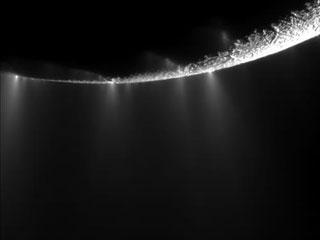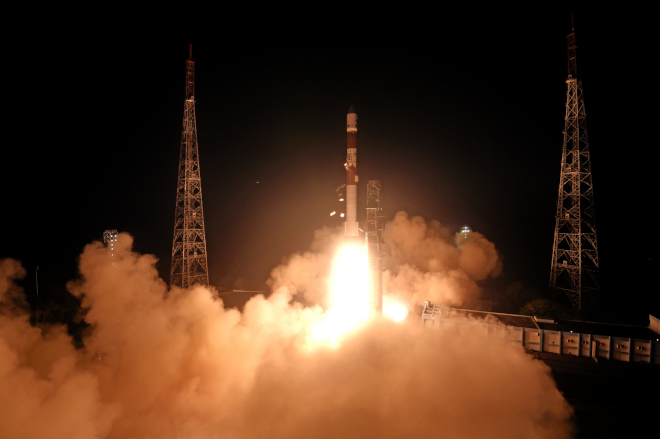
Dramatic plumes, both large and small, spray water ice out from many locations along the famed 'tiger stripes' near the south pole of Saturn's moon Enceladus. Photo:JPL
WASHINGTON (BNS): NASA’s Cassini spacecraft has found the strongest evidence for the existence of large-scale saltwater reservoirs beneath the Enceladus moon’s icy crust.
Scientists have directly tested the sample water ejected from the icy plumes of Saturn’s moon Enceladus.
Water present at the surface of the moon contains salt-rich ice grains expelled from fissures, known as tiger stripes.
The Cassini spacecraft discovered the plumes in 2005 and more recently has been able to fly directly through them.
According to ESA, during three of Cassini’s passes in 2008 and 2009, the Cosmic Dust Analyser measured the composition of freshly ejected plume grains. The icy particles hit the detector target at speeds of 6.5–17.5 km/s, and vaporised instantly. Electrical fields inside the instrument then separated the various constituents of the resulting impact cloud for analysis.
Far away from Enceladus, the data show that the ejected grains are relatively small and mostly salt-poor, closely matching the composition of the E-ring. Closer to the moon, however, Cassini has found that relatively large, salt-rich ice grains dominate.
The salt-rich particles have an ‘ocean-like’ composition which indicates that most, if not all, of the expelled ice comes from liquid saltwater, rather than from the icy surface of the moon.
Deep underneath Enceladus’ surface, perhaps 80 km down, there is a layer of water between the rocky core and the icy mantle, kept liquid by tidal forces generated by Saturn and some neighbouring moons, as well as by the heat generated by radioactive decay.
Salt in the rock dissolves into the water, which accumulates in liquid reservoirs beneath the icy crust. When the outermost layer cracks open, the reservoir is exposed to space. The drop in pressure causes the liquid to evaporate, with some of it flash-freezing into salty ice grains: together these create the plumes.
 Previous Article
Previous Article Next Article
Next Article













The Indian Air Force, in its flight trials evaluation report submitted before the Defence Ministry l..
view articleAn insight into the Medium Multi-Role Combat Aircraft competition...
view articleSky enthusiasts can now spot the International Space Station (ISS) commanded by Indian-American astr..
view article